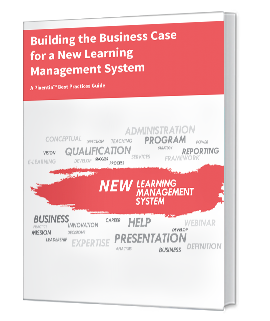
Learning management systems have matured. Learning implementation is now a standardized process, and every LMS vendor and consultant can recite the steps from memory. But if the process is so standardized and successful, why doesn’t every implementation make organizations more successful?
The reason is that a learning management system will not create a learning organization any more than a brush will create a painting. Someone has to pick it up and use it. Moreover, the person using it must know what she or he wants to accomplish, why it is necessary, and how to assess the result.
Let’s discuss the four essentials for successful implementation of Learning Management System that will make your organization succeed.
Strategic Alignment
Plan a discussion with top management about your company’s purpose, the strategy to achieve it, and the culture that supports the purpose and strategy. Plan how your project strategy will support your purpose, and how learning delivery and your change management plan will support the company’s direction and culture.
This discussion may be the opportunity you have been waiting for to discuss purpose and culture. At the very least you will learn w here your project fits in your company’s strategy.
If your purpose is to introduce a cheaper, faster transaction tool and not transformative technology, this may be an opportunity to plan a “stealth” improvement. You can embed positive change in leadership training.
Get top management to commit to leading the way. Identify a respected project champion who can tap the resources to complete the project.
Be realistic. You will not transform an organization that management doesn’t want to change.
Team Building
You need to have all stakeholders represented on the team, and you will need team-building activities to get the team working together. There may be hidden conflicts, and you can help people address them now instead of a critical point in the project. Even people who have worked together for many years can benefit from team-building activities.
When people work together, there will be conflict. Lay down rules for dealing with differences to help to resolve issues before they become problems.
- Be clear about roles and responsibilities. Remember that “Everyone” and “Someone” are not responsible persons.
- Define communication channels and escalation procedures.
- If people stray away from the defined structure, address the behavior. Be prepared to change the structure if the situation requires it.
Change Management
By far, most implementations that don’t meet their objectives are change management failures. They are preventable if you plan and execute well.
Build a change management and communication plan and work the plan. The change management plan must fit the organizational culture, and you must communicate in ways people understand.
- Start communication the moment you start seeking a new solution. Starting early helps build momentum.
- Engage people in all parts of your organization when you assess the company’s needs. As you listen to their concerns, you will foster dissatisfaction with the existing processes. This will help adoption of new methods.
- Tailor messages to your audiences. You will not engage truck drivers with the same message you send to sales executives.
- Use communication channels that have proven effective. If people in the organization ignore emails, try push notifications in their workstation logins, or attach them to communications that do get attention.
- Make sure Marketing is on the change management team. They craft messages that get attention and know how to measure the response.
Results
Measuring the results of the project is essential to proving business value. Training metrics are improving as companies learn how to measure the impact of training. Traditional metrics such as surveys can be helpful, but it is now possible to go beyond delivery measures to results analysis.
- Look for real results, such as higher sales, lower accident rates, or lower undesired turnover.
- Choose an implementation partner who is skilled in workforce analytics.
Once these essential components are in place, put them in the project plan. They will ease the way and make you more successful.
Further reading
Pixentia blog article about finding the best LMS
Pixentia blog article about change management
Pixentia is an enthusiastic family of individuals, fervent to make lives simpler through effective use of technology. Our mission is to implement solutions that drive business results. Know more of Insights from our thoughts and experience.
Contact us today or call 1-855-978-6816 to talk with us about your business needs.



